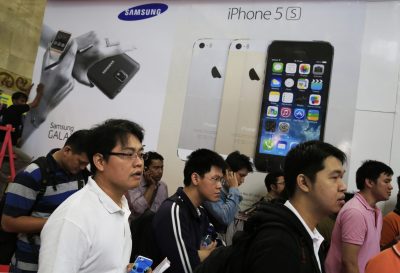In 2016, there were 76 million Indonesians with a Facebook account, the fourth highest in the world. Jakarta has been named the world’s ‘most active city on Twitter’, while other platforms such as Instagram, Whatsapp, LINE, Path and Telegram are all being used in unique and dynamic ways in a country with a voracious demand for online communication.
But some see the advent of the internet in Indonesia as another index of inequality or even ‘yet another impediment to equal participation in an emerging democracy’. Nearly 20 years since the country’s reformasi, it is worth asking whether the internet has led to greater inequality in Indonesia, and what can be done about it.
Indonesia’s digital economy is an area of great potential, as shown by the recent success of Go-Jek and Grab, companies who rely on the ubiquitous use of smartphones to order transportation services. Go-Jek raised US$550 million in mid-2016, which led to it being valued at US$1.3 billion — an incredible result given it launched its mobile application only a year and a half earlier. On the back of Go-Jek and other e-commerce successes, President Joko Widodo has stated that Indonesia should have ‘1000 technopreneurs’ by 2020 — the year he estimates his country’s digital economy will be worth US$130 billion.
On the other hand, this rapid advancement of internet communication in predominantly urban areas of the archipelago is only part of the story. While the number of Indonesians using the internet has followed an upward global trend, increasing sevenfold from 8.1 million in 2005 to 56.6 million in 2015, Indonesia’s internet penetration remains only around 25 per cent, with around four-fifths of the country’s internet users located on the islands of Java and Sumatra.
One’s social or physical position in the geopolitical landscape of Indonesia, with its highly uneven spread and quality of digital infrastructure, to a large extent decides whether, how fast, how long, with whom, and on what other terms and conditions one can have digital connectivity. For communities in disadvantaged regions, the infrastructure and media for digital communication and information are underdeveloped or unavailable. This situation is being improved, but behind the glossy sell of social-media driven campaigns, tech start-ups and e-commerce growth, the development of ‘disruptive’ digital technologies presents significant challenges.
First, digital access comes with various costs, ranging from the financial costs for technological infrastructure and individual consumer items, to the environmental costs of e-consumption and e-waste, the ‘flexploitation’ in formal and informal internet-related labour, and the social costs of stigmatisation and intimidation.
Even for those who do have internet access, there are literally millions of Indonesians who use ‘the internet’ only for Facebook or Whatsapp on their mobile phones via 2G satellite technology. Given the low speeds, these people are being shut out of even using Google or Wikipedia effectively, let alone the opportunity to be one of Indonesia’s ‘1000 technopreneurs’.
The digital divide is not only a matter of level of access to technology and material infrastructure, but also a broader range of factors that shape people’s opportunities for adopting digital media, like gender, education, socio-economic status and age. Adoption goes beyond technology access per se, as it depends on people’s awareness of the potential benefits of using media such as the internet. In that sense, internet skills go beyond practical computer skills and require specific forms of digital literacy.
According to Onno Purbo in Digital Indonesia, government top-down strategies focusing on material infrastructure, such as the introduction of internet-connected ‘smart villages’, are insufficient. The sustainability of rural digital networks relies on digital education, building internet and mobile phone infrastructure in response to local demand, keeping the costs down, and exploring economic opportunities that can arise from the use of digital technology.
As IT isn’t a compulsory subject at school, digital literacy depends largely on the educational services and campaigns of non-government organisations, commercial media providers and independent electronic forum sites. Especially in rural areas, the lack of internet affordability, skills, awareness and cultural acceptance, as well as the lack of content and services in local languages, constitute considerable hurdles to digital literacy.
As the Jokowi government prepares to fight inequality in the lead-up to the 2019 election, one of Indonesia’s biggest challenges is understanding how the internet can lead to a more divided and unequal society, as users in urban areas with better access to high-speed internet adapt to the digital world faster than their fellow countrymen and women in rural areas.
While enabling emancipation in some cases, in other cases digital technology supports or even reinforces social class and status distinctions. Bridging the digital divide remains a huge challenge for the Indonesian government, but if done successfully, it will have profound impact on the country’s economy, society and culture.
Ross Tapsell is a lecturer at The Australian National University and Edwin Jurriens is a lecturer at the University of Melbourne. Their edited Digital Indonesia: Connectivity and Divergence will be launched at the ANU on 21 August, and the University of Melbourne on 22 August.


The USA has a digital divide because the cable companies will not provide services to much of inner cities and rural America unless they can make a good profit off of them. There have been attempts by the local government to provide the services; however, the cable companies have used their lobbyists to put a stop to it.